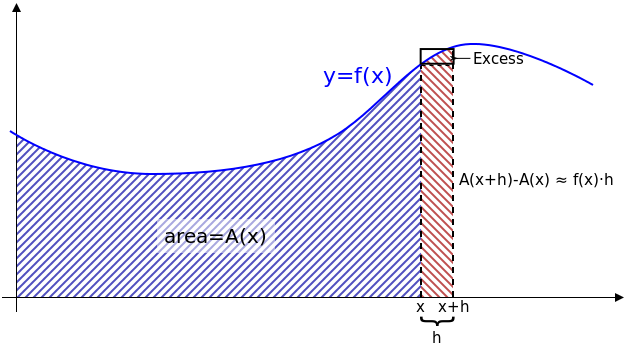This article was published in Scientific American’s former blog network and reflects the views of the author, not necessarily those of Scientific American
On this episode of My Favorite Theorem, Kevin Knudson and I were delighted to talk with University of Chicago mathematician Amie Wilkinson. You can listen here or at kpknudson.com, which also has a transcript of the episode.
As her favorite theorem, Wilkinson chose the fundamental theorem of calculus. Excellent choice! It has both “fun” and “fundamental” in its name. The fundamental theorem of calculus is a bridge between the two seemingly disconnected tasks of computing areas under curves (integration) and finding derivatives of curves (differentiation). The derivative of a curve f(x) at a point x is the slope of the curve’s tangent line at that point, or if you think of the curve as modeling the location of an object, the object’s speed at a given moment.
On supporting science journalism
If you're enjoying this article, consider supporting our award-winning journalism by subscribing. By purchasing a subscription you are helping to ensure the future of impactful stories about the discoveries and ideas shaping our world today.
Specifically, the fundamental theorem says that to find the area under a curve, the graph of the function f(x), it suffices to find another function, called A(x) in the illustration below, that has f(x) as its derivative.

An illustration of the fundamental theorem of calculus. The area shaded in red stripes that go down to the right represents a small addition, a sliver of width h, to the area under the curve. The diagram shows that the change in area created by adding this sliver is approximately equal to the value of the function at the left point of the sliver times h. As h gets smaller and smaller, this becomes the statement that the derivative of the area under the curve is the height of the curve. Credit: Kabel Wikimedia(CC BY-SA 4.0)
The fundamental theorem of calculus is closely related to the mean value theorem, which states that if a sufficiently well-behaved function has an average rate of change of, say, c, over an interval, then at some point in the interval, its derivative, or instantaneous rate of change, must be c as well. She shared her first encounter with the mean value theorem, this 1966 video she watched in her high school calculus class. She managed to dig it up, so you get to watch it too!
The Theorem of the Mean Policeman (1966) from Eric Cornwell on Vimeo.
The fundamental theorem of calculus works for one-dimensional sorts of functions, the ones that take one real number as an input and produce one real number as an output. But there are similar theorems about more complicated functions. Wilkinson talked about Stokes’ theorem, a theorem in multivariable calculus that is analogous to the fundamental theorem of calculus.

Stokes' theorem in a general form.
I really liked the way she described the connection between the fundamental theorem of calculus and Stokes’ theorem. Stokes’ theorem doesn’t look exactly like the fundamental theorem of calculus, but both of them show this kind of duality between a function’s values on the boundary or edge of an object (∂Ω in the formula above) and its derivative's values on the interior of the object (Ω). In the case of the fundamental theorem, the object is just a one-dimensional interval, so the “boundary” is just the two endpoints of the interval. For Stokes’ theorem, the higher-dimensional objects, of course, have higher-dimensional boundaries.

A mango, the ideal fruit to pair with the fundamental theorem of calculus. Credit: Hamza Butt Flickr(CC BY 2.0)
To pair with the fundamental theorem of calculus, Wilkinson chose a ripe, luscious mango. You’ll have to listen to the episode to find out why that was the perfect match for the fundamental theorem of calculus.
You can find more information about the mathematicians and theorems featured in this podcast, along with other delightful mathematical treats, at kpknudson.com and here at Roots of Unity. A transcript is available here. You can subscribe and review the podcast on iTunes or wherever you get podcasts. We love to hear from our listeners, so please drop us a line at myfavoritetheorem@gmail.com. Kevin Knudson’s handle on Twitter is @niveknosdunk, and mine is @evelynjlamb. The show itself also has a Twitter feed: @myfavethm and a Facebook page. Join us next time to learn another fascinating piece of mathematics.
Previously on My Favorite Theorem:
